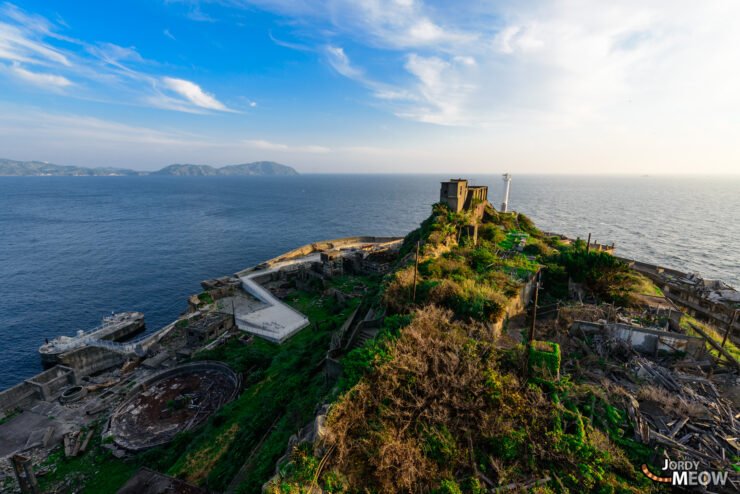Known for its eerie atmosphere and haunting beauty, Gunkanjima, also called “Battleship Island,” is an abandoned island located off the coast of Nagasaki, Japan. Once a thriving coal mining community, it now stands as a testament to Japan’s industrial past and the effects of urbanization and depopulation. This article delves into the fascinating history, culture, and current status of Gunkanjima, inviting you to explore this lost island village.
1. A Brief History of Gunkanjima
Gunkanjima was originally uninhabited until the late 19th century when coal was discovered. By the 1900s, the island had transformed into a bustling community with thousands of residents. The rapid industrialization fueled the growth of this unique village, which reached its peak population in the 1950s. However, as oil replaced coal, the island’s fortune quickly declined, leading to its abandonment in 1974.
2. The Architecture of Gunkanjima
The island is famous for its dense, multi-story concrete buildings, which were constructed to house the workers and their families. The most notable structure is the large apartment complex known as the Gunkanjima Coal Mine, which housed up to 5,000 people at its peak. Walking through the crumbling buildings today provides a glimpse into the lives of those who once called this place home.
3. The Mystery of Abandonment
What makes Gunkanjima particularly intriguing is the suddenness of its abandonment. As the last miners left the island, they left behind a ghost town frozen in time. The reason for this mass exodus is attributed to the decline of the coal industry and the shift towards oil, resulting in the closure of the mines. The haunting silence of the island tells a story of prosperity turned to desolation.
4. Cultural Significance of Gunkanjima
Despite its abandoned state, Gunkanjima remains culturally significant. It has been recognized as a UNESCO World Heritage Site for its historical importance in Japan’s industrial revolution. The island is often used in films and documentaries, serving as a backdrop for stories about resilience and the impact of industrialization on communities.
5. The Nature of Gunkanjima
Over the decades, nature has reclaimed much of Gunkanjima. The buildings are now entwined with vines, and the island is home to a variety of plant and animal species. This juxtaposition of man-made structures and nature creates a unique and hauntingly beautiful landscape, drawing photographers and adventurers alike.
6. Visiting Gunkanjima: What to Expect
Access to Gunkanjima is strictly regulated due to safety concerns, but guided tours are available from Nagasaki. Visitors can explore the island’s ruins while learning about its history and significance. The tours often include detailed narratives about the lives of the islanders, bringing the ghost town to life.
7. Safety Concerns and Preservation Efforts
As an abandoned site, safety is a major concern for visitors to Gunkanjima. Many structures are unstable, and visitors are required to adhere to strict guidelines. Preservation efforts are underway to protect the site and its historical significance, ensuring that future generations can explore this unique piece of history.
8. Gunkanjima in Popular Culture
Gunkanjima has made appearances in various films, television shows, and video games, enhancing its mystique. Its haunting visuals and rich history make it an ideal setting for stories about abandonment and the passage of time. Films such as Skyfall featured the island, introducing it to a broader audience and sparking curiosity about its past.
9. The Future of Gunkanjima
As interest in Gunkanjima continues to grow, discussions around its future are becoming increasingly important. Balancing tourism with preservation is a challenge that must be addressed to protect the island’s fragile ecosystem and historical structures. Sustainable tourism initiatives are being explored to ensure that the site can be enjoyed without causing harm.
10. Conclusion: The Enigma of Gunkanjima
In conclusion, Gunkanjima stands as a powerful reminder of Japan’s industrial past and the effects of modernization. Its haunting beauty, rich history, and cultural significance make it a compelling destination for those seeking adventure and insight into a lost way of life. Exploring this abandoned island allows visitors to reflect on the transient nature of human existence and the resilience of nature. Are you ready to uncover the mysteries of Gunkanjima?

